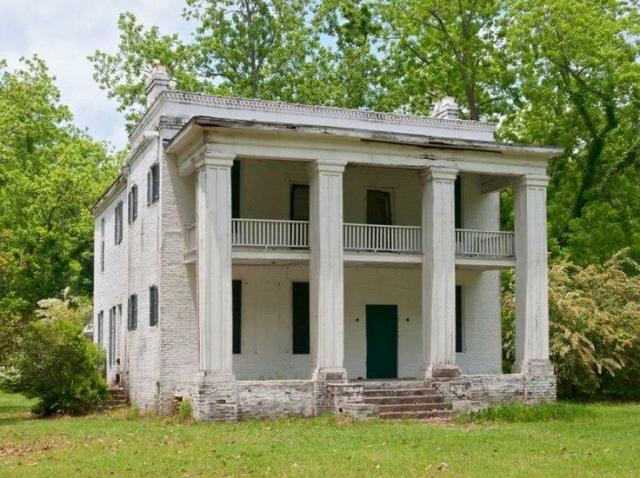Cahaba, Alabama
 Here’s a story of a town abandoned for reasons other than the decline of mining production. One of Alabama’s first capitals, Cahaba, was located on the confluence of two large rivers and was often considered a flooding hazard. The low-elevation was also accredited to the poor air quality of Cahaba. A major flood occurred in 1825 causing part of the statehouse to collapse. When this happened, it was decided that the capital would move to Tuscaloosa in 1826. This caused most of the town’s inhabitants to move as well. Some stayed and actually found a way to recover by establishing Cahaba as a distribution point for cotton that would then be shipped to the port of Mobile. However, following the Civil War, the county seat was moved to the nearby town of Selma, and eventually everyone left. The abandoned town was the setting for many ghost stories during the 19th/20th century and one of the most infamous stories is the “ghostly orb” which was seen floating over a now-vanished garden maze of C.C. Pegues. A few streets, some buildings, and some cemeteries are all that’s left of Cahaba, which is now maintained by the Alabama Historical Commission.
Here’s a story of a town abandoned for reasons other than the decline of mining production. One of Alabama’s first capitals, Cahaba, was located on the confluence of two large rivers and was often considered a flooding hazard. The low-elevation was also accredited to the poor air quality of Cahaba. A major flood occurred in 1825 causing part of the statehouse to collapse. When this happened, it was decided that the capital would move to Tuscaloosa in 1826. This caused most of the town’s inhabitants to move as well. Some stayed and actually found a way to recover by establishing Cahaba as a distribution point for cotton that would then be shipped to the port of Mobile. However, following the Civil War, the county seat was moved to the nearby town of Selma, and eventually everyone left. The abandoned town was the setting for many ghost stories during the 19th/20th century and one of the most infamous stories is the “ghostly orb” which was seen floating over a now-vanished garden maze of C.C. Pegues. A few streets, some buildings, and some cemeteries are all that’s left of Cahaba, which is now maintained by the Alabama Historical Commission.

